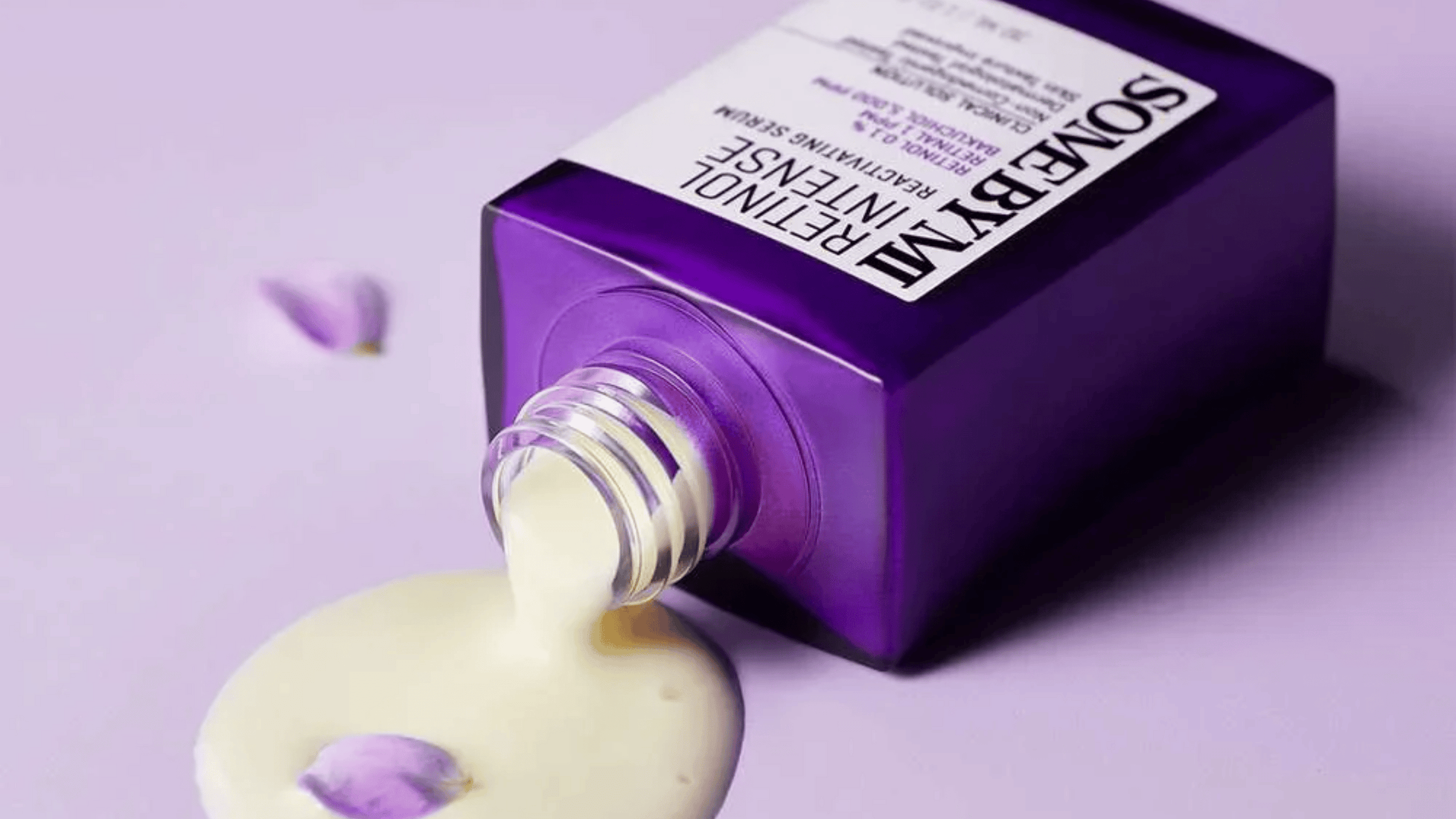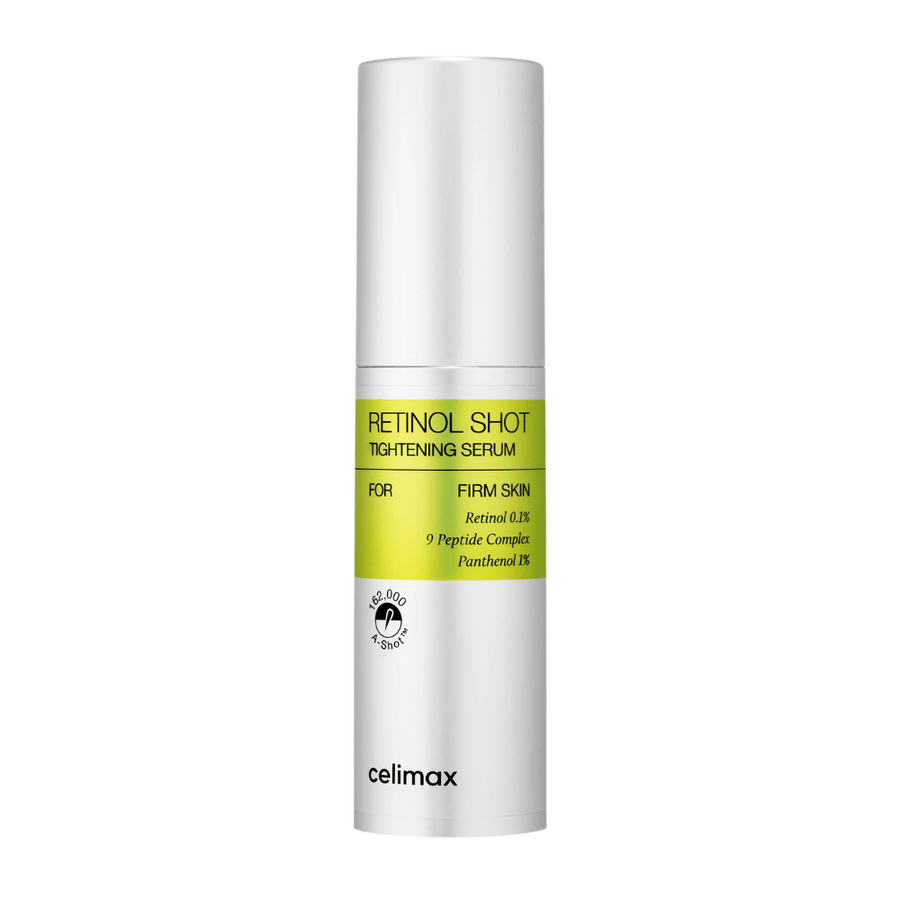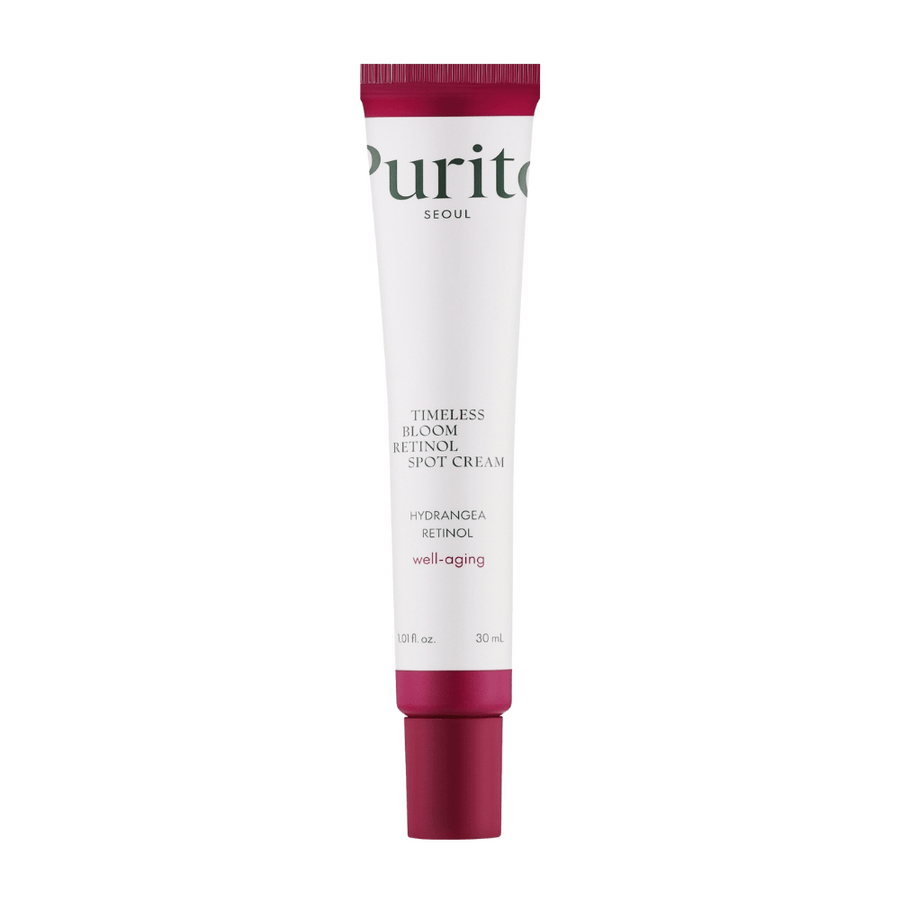
Retinol is a vitamin A that improves the skin's texture and appearance. It reduces wrinkles, combats acne, and evens out the skin tone. How does it work and how do you use it best? Read on to find out everything about retinol.
Key Takeaways
- Retinol is a form of vitamin A that improves skin texture, stimulates collagen production, and helps against acne and pigmentation.
- Korean skincare uses retinol in combination with mild ingredients and the layering method to minimize irritation and optimize effect.
- To get the best results from retinol, it is important to use it in the evening with moisturizing products and always use sunscreen during the day.
What is retinol?
Retinol is a fat-soluble vitamin A that plays a central role in skincare. It is a form of vitamin A that converts to retinoic acid when it comes into contact with the skin, which is the active form that provides all the fantastic benefits. This transformation is key to retinol's effectiveness as retinoic acid strengthens cell renewal and improves the skin's ability to retain moisture.
But retinol does much more than that. It has restorative and smoothing properties that improve the skin's texture and appearance. By regulating sebum production, retinol can also reduce the risk of acne outbreaks, making it a versatile ingredient that can be used to treat several different skin problems. Retinol also stimulates the production of collagen and elastin, which helps make the skin firmer and more elastic.
For those struggling with pigmentations and uneven skin tone, retinol can be a real savior. It reduces dark spots and helps even out the skin tone, resulting in a clearer and more uniform complexion. So whether you want to combat signs of aging, acne, or pigmentation, retinol can be the right choice for you.
Benefits of using retinol
Retinol offers a multitude of benefits that make it an important part of many skincare routines. It is known for its properties to counteract the effects of sun damage and pigmentation by reducing dark spots and evening out the skin tone. This makes retinol an excellent choice for those who want to maintain an even and radiant complexion.
One of the most appreciated benefits of retinol is its ability to reduce fine lines and wrinkles. By improving skin texture and stimulating collagen production, retinol can give a younger and firmer skin. Therefore, it is a popular ingredient in anti-aging products worldwide.
For those suffering from acne, retinol can also be a solution. By reducing sebum production and keeping pores clean, retinol can lead to fewer acne outbreaks and clearer skin. When used correctly, retinol can therefore be a powerful ally in the fight against various skin problems, from signs of aging to acne and pigmentation.
How does retinol work?
Understanding how retinol works can help you use it more effectively. Retinol increases cell renewal and binds moisture in the skin, resulting in smoother and healthier skin. But that's not all. Retinol also acts as an antioxidant, meaning it protects the skin against damage caused by free radicals.
One of the most impressive aspects of retinol is its ability to stimulate the production of collagen. Collagen is a protein that gives the skin its firmness and elasticity, and by increasing collagen production, retinol can make the skin firmer and reduce the appearance of wrinkles. Additionally, retinol influences skin cells to behave like younger cells, further improving the skin's appearance and texture.
To achieve the best possible effect from retinol, it is important to apply it correctly. Use retinol in the evening after cleansing and before face cream. By following this routine, you can maximize the benefits of retinol and improve your skin's health and appearance.
Retinol in Korean Skincare
Korean skincare is known for its innovative techniques and ingredients, and retinol is no exception. In K-beauty, retinol is often combined with other gentle ingredients like bakuchiol and retinal to minimize irritation and maximize skin benefits. This allows even those with sensitive skin to benefit from retinol without experiencing too much discomfort.
Another unique aspect of Korean skincare is the layering method, where retinol is applied in several thin layers to optimize absorption and effectiveness. Through this technique, retinol can penetrate deeper into the skin and provide better results without causing excessive irritation.
Products in K-beauty use advanced technology to ensure that active ingredients like retinol are effectively absorbed by the skin. This means you can expect quick and visible results, such as reduced fine lines, improved skin texture, and a clearer complexion. Korean skincare also makes it possible to use retinol in a gentle way, which is especially important for those with sensitive or dry skin.
Introducing Retinol into Your Skincare Routine
Introducing retinol into your skincare routine can be challenging, especially if you have sensitive skin. It is important to start with a low concentration and use the product in the evening to minimize the risk of irritation. By following these steps, you can help your skin get used to retinol and gradually increase usage without causing discomfort.
A common strategy is to start by using the product every other evening during the first week and then gradually increase usage. This approach helps to minimize redness, dryness, and irritation that can occur with the first use of retinol. If you experience discomfort, reduce the frequency of use until the skin adjusts.
To maximize the benefits of retinol and minimize the risk of irritation, it is recommended to use moisturizing products along with retinol. This helps keep the skin hydrated and balanced, which is especially important for those with sensitive skin. By following a gradual and carefully planned introduction, you can enjoy all the benefits of retinol without compromising your skin's health.
Retinol for Sensitive Skin
For those with sensitive skin, using retinol can be particularly challenging. However, with the right approach, even sensitive skin can benefit from retinol's amazing properties. It is important to start with lower concentrations of retinol and gradually increase usage to minimize the risk of irritation.
Another important aspect is to use retinol regularly in the evening, as this provides better results compared to sporadic use. Applying a moisturizer after retinol can also help to counteract dryness and irritation. If you experience discomfort, reduce the frequency of use until your skin gets used to retinol.
Retinol can make the skin more sensitive to other active ingredients, so it is important to be careful with which products you combine with retinol. By following these guidelines, even those with sensitive skin can benefit from retinol's ability to improve skin texture and reduce pigmentation.
Common forms of retinol
There are several different forms of retinoids used in skincare, and it is important to know the differences to choose the right product for your skin. Here are some of the most common forms of retinoids:
- Tretinoin: The most powerful form of retinoid, often requiring a prescription.
- Retinol: Can be used in cosmetic products without a prescription.
- Retinal: Another form of retinol that can also be used without a prescription.
- Retinyl palmitate: A milder form of retinol used to minimize the risk of irritation.
By understanding these differences, you can better choose a product that suits your skin type and needs.
Retinol products come in different strengths, and it is important to choose one that suits your skin type and specific needs. For sensitive skin, it may be good to start with a milder form like retinyl palmitate and then gradually move to stronger forms like retinol or retinal.
By understanding the different forms of retinol and how they work, you can choose the product that best suits your skin and your goals. Whether you want to reduce wrinkles, improve skin texture, or treat acne, there is a form of retinol that can help you achieve your skincare goals.
Tips for best results with retinol
To get the best possible results with retinol, it is important to follow some basic guidelines. First and foremost, you should always use sun protection during the day when using retinol, as it can make the skin more sensitive to the sun. A sunscreen with at least SPF30 is recommended to protect the skin effectively.
Combining retinol with moisturizing products can also enhance its effectiveness and reduce the risk of irritation. Use a moisturizer after applying retinol in the evening to keep the skin hydrated and balanced. By following this routine, you can maximize the benefits of retinol and achieve clearer, firmer, and more radiant skin.
Finally, be patient and consistent in your use of retinol. Results may take a few weeks to show, but with regular use, you will see significant improvements in your skin's texture and appearance. By following these tips, you can ensure that you get the most out of your retinol product.
Summary
Retinol is a powerful ingredient in skincare that offers a range of benefits, from reducing fine lines and wrinkles to improving skin texture and evening out skin tone. By understanding what retinol is, how it works, and how best to introduce it into your skincare routine, you can maximize its benefits and achieve the radiant skin you have always dr dreamed of.
Whether you have sensitive skin or are a beginner with retinol, there are strategies and products that can help you use this fantastic ingredient in a safe and effective way. By following the tips and guidelines discussed, you can ensure that you get the most out of your retinol product and achieve healthier, clearer, and more youthful skin.
Common questions and answers
What is retinol and how does it work?
Retinol is a form of vitamin A that stimulates cell renewal and increases collagen production, which helps to improve the skin's texture and appearance. This makes it an effective agent for combating signs of aging.
Can I use retinol if I have sensitive skin?
Yes, you can use retinol if you have sensitive skin, but be sure to start with lower concentrations and gradually increase to avoid irritation.
How do I introduce retinol into my skincare routine?
To effectively introduce retinol into your skincare routine, start with a low concentration and apply it in the evening every other night for the first week. Then gradually increase usage to minimize the risk of irritation.
What is the difference between retinol and tretinoin?
The difference between retinol and tretinoin is that tretinoin is a stronger retinoid that usually requires a prescription, while retinol can be used in over-the-counter cosmetic products.
What are the most common side effects of retinol?
The most common side effects of retinol are redness, dryness, and irritation, especially during initial use. It is recommended to always use moisturizer to counteract these effects.






























